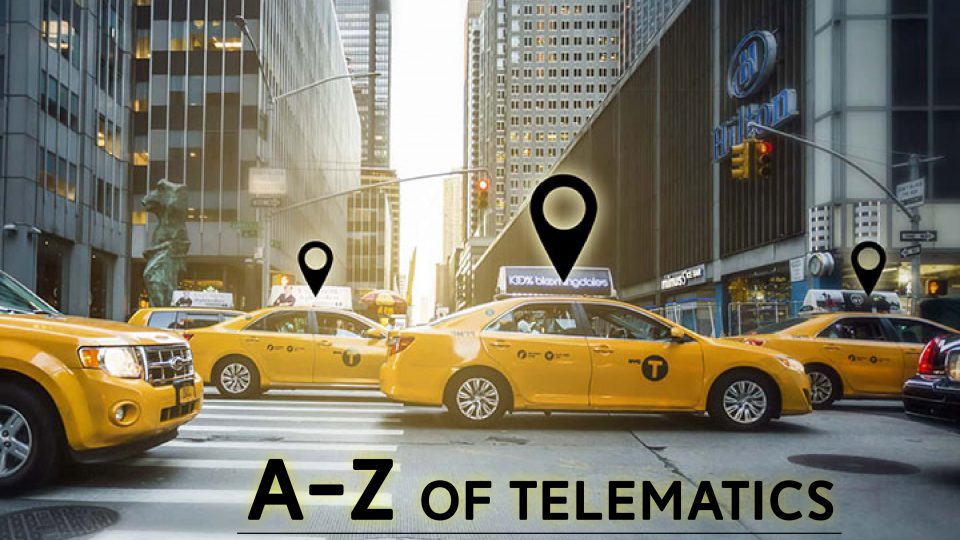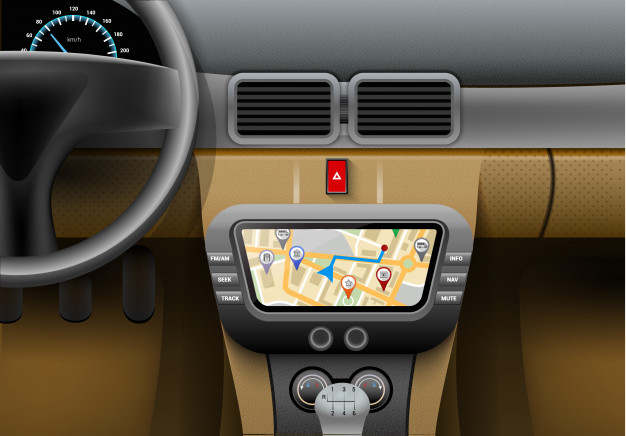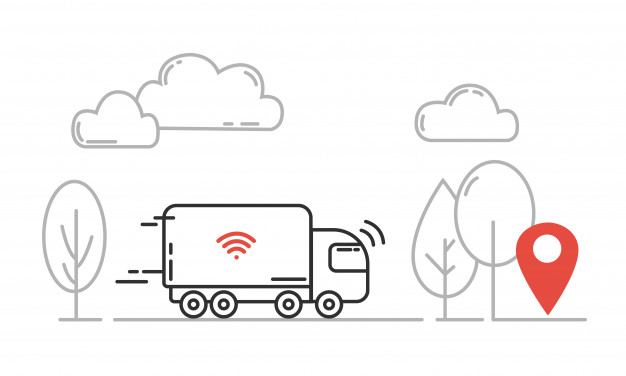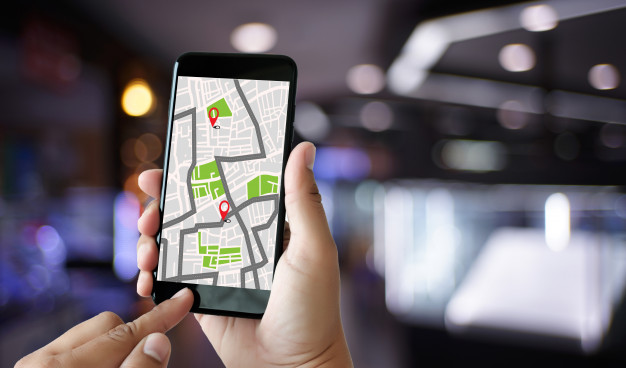

Considered as the next big thing in automobile technology, Telematics is the science of telecommunication and informatics. It has been often eulogized for its use in fleet management and the potential it holds. The ever-growing demand is proof of how well automotive telematics is doing in terms of business. In this article, we’ll cover everything you need to know, from A to Z of telematics.
Let’s begin with the most basic question, What is telematics?
About Telematics
The term was initially coined in France, ‘télématique’ means using telecommunications to transfer data. It was a combination of two French words, which means telecommunication and information.

It is an interdisciplinary field that incorporates telecommunication, road transportation, vehicular technologies, and road safety.
Make your business more profitable with LocoNav’s Telematics
Telematics is simply a process of collecting driving data and using it for multiple purposes. At present, the most common use of telematics solutions is for pricing insurance. The goal is to keep the driving as safe as possible to earn more rewards.
Benefit of Telematics in Insurance
As per the insurance policy, the user has to install the “BLACK BOX” in their car. It can be placed anywhere within the vehicle and will effectively collect and send the driving data to the insurer.

The concerned authority will observe the data and score the car owner on how safe their driving style is. It will include various factors such as the speed, the number of times the brakes were used, fuel consumption, etc. It ultimately will judge how reliable and secure the driving was. If the user meets the standards, he can get exclusive discounts on the insurance.
Components of Telematics System
Major components of the system are as follows –
- CRM System – Customer Relationship Management is a system designed to manage the company’s approach with present and future customers.
- TCU – Telematics Control Unit is devised such that it can withstand heat and vibration. It is so strong and flexible that it can be placed anywhere including the engine compartment.
- Wireless Infrastructure – If informatics is the brain of telematics, then telecommunication is the heart. This statement is enough to show how dependable telematics is on proper communication for its efficient execution. The wireless infrastructure makes it possible for everyone to communicate seamlessly.
Elements of the Black Box
The black box is the device that collects and processes the driving data. There are many other applications it offers apart from being used for insurance purposes. The Black Box’s captured data can be used by drivers and fleet managers apart from insurance to analyze and organize their operation.
There are 4 major parts of the black box:
- GPS System
Global Positioning System or GPS is responsible for pinpointing and locating the exact position of the vehicle. It helps the owner, manager, driver or the insurer comprehend the location and know where the vehicle has travelled to or what route it has taken.
Sectors like Airlines, trucking companies, shipping companies, drivers and fleet managers use GPS to track their vehicles around the globe.
- Accelerometer
An accelerometer is usually a motion sensor. It analyzes the acceleration, speed, duration of brakes, handling on roads and helps the manager, insurer or anyone who observes the data create a profile of the driver.
- SIM Card
The Sim Card helps in processing the data. It sends the driving information to the authorities and vice versa.
It has a special device which allows the user to communicate with various entities. SIM card also helps the network identify the user. This makes sense as even in our mobile phones, we cannot call, text or use the internet without having the SIM in the device.
The software used in the management of SIM is called the M2M SIM Management Software, where M2M stands for ‘machine to machine’. The system uses cloud technology to communicate and store the data. It is very accessible, adaptable and easy to use which is the reason why it allows the smooth flow of data between the user and the data collector.
- Telematics Software
Under the shadows of telematics, lays mobile devices, a combination of the computer parts and the Global Positioning System or GPS. The system integrates different fields to make sure the job is done.
The system is designed such that it can be computed as the number of users increase. However, quality is also kept in mind. The telematics system doesn’t compromise on performance as it continues to offer geographically accurate and highly reliable data.
Information shared by the Black Box
Many people might feel what the telematics solution does is a privacy breach. But contrary to that, they only share the data which is absolutely essential for the insurer.

This data includes:
- Your speed with respect to the roads
- The time of your drive – day or night
- Whether or not you brake or accelerate sharply
- Halts during the long journeys
- Total mileage
Utilization
Fleet Management is the field that benefits most from Telematics after Insurance. There are various applications of telematics in the fleet industry. Some of the major ones are as follows:
- Improved Customer Service – Vehicle tracker, route reporter, and other modern technologies allow the fleet company to improve its services through immediate feedback. This is because of the superior communication system that allows transparency and a free flow of data. Moreover, this also helps them in enhancing their overall execution.
- Conscious and Responsible Driving – The driver is aware that his driving data being collected and analyzed by the insurer or the fleet manager. For the private owners, the better their driving is, the more money they can save. For the fleet drivers, enhanced driving scores earn them more salary and increase their rank.
On top of this, they are assisted with features such as personalized driver training, accident alerts, engine stats, reporting of risk and driver behavior based on the collected data. This eventually helps them improve their driving skills and ultimately reduces the chances of rash driving, which is the reason for more than 80% of accidents.
Telematics offers complete analysis and detailed report after every ride. This gives the driver a good idea of what his vehicle’s engine condition is. It also alerts the fleet and driver well in advance before servicing. This helps the management avoid any possible breakdown and therefore keep the vehicle safe and increase its performance.
Also read: GPS Tracking for Monitoring Employees: Two Sides of the Same Coin
Also read: How To Save The Environment with a Vehicle Tracking System
Various reasons why companies use telematics
As per research conducted in the United Kingdom by Arval’s Corporate Vehicle Observatory Barometer, 2018, the following are the major reasons why companies working with fleet management incorporate telematics solutions:
- Real-time or Live vehicle location – 95%

Majority of the organizations use telematics for this reason. Hence, It can be concluded that the live update of a vehicle is the primary reason.
Other reasons include:
- Improved Driver Safety – 87%
- Enhanced Driver Behavior – 87%
- Economical fleet costs – 75%
- Journey optimization – 70%
The research comprised of approximately 3,700 fleets.
Who uses Telematics
The fleet industry and Insurance are not the only places where telematics is used. As the days pass, more and more sectors have started adopting this technology for enhanced productivity. Below are the major industries where telematics has shown a great rise.
- Service Companies
- Companies which offer services in the areas like HVAC (Heating, Ventilating, and air conditioning) or plumbing often need various fleet support based on the requirements of the task.
- Throughout the time of operations, telematics features such as real-time location updates and other assets compel the owners and managers to properly execute their services.
- Government Fleets
- There has been a massive demand for vehicles that work for the well-being of the society such as street sweepers, recycling trucks, emergency vehicles, and other public works vehicles.
- Telematics technology provides these vehicles to be managed through a primary administration. This helps the government authorities to deploy proper vehicles as per the necessities of the area.
- Features like live updates and vehicle analysis hold the management on track. It also makes it conceivable for them to know the status of the deployed vehicle even in trivial areas.
- Construction Industry
- One can very well recognize the need and urgency of this business, particularly in developing nations like India where construction projects have to repeat frequently.
- Based on their service, they require different types of vehicles. It can be heavy, light, huge or small. Also, the machinery used in construction localities is considerably expensive.
- The primary purpose behind the use of telematics is chiefly related to safety concerns. The live updates allow them to prevent theft. The real-time location allows the manager to track their vehicles even in remote areas.
Zeal and Future
The primary objective of automotive telematics is not to earn rewards, but to improve driving and make the journey safe.
Industries have realized that the sooner they adopt this technology, better are the chances of advancement. It will surely give them a competitive edge over other companies.
It is highly possible that through the integration of Machine Learning and Artificial Intelligence, the future telematics will be able to give instant feedback and suggestion to the driver. This will help make the ride safer.
As of now, the Telematics market is just in its initial development phase. The growth and demand is proof that this technology is not slowing down anytime soon. It will be interesting to see what the future beholds for the most promising technology in the automobile industry.
LocoNav offers your business solutions for Vehicle Tracking, Fleet Monitoring and Telematics. LocoNav helps you in optimising your operations and business while you focus on the growth of your enterprise!
Quick read: FASTag: Challenges and Solutions
Quick read: Looking Ahead: The Future of GPS Tracker System in 2019